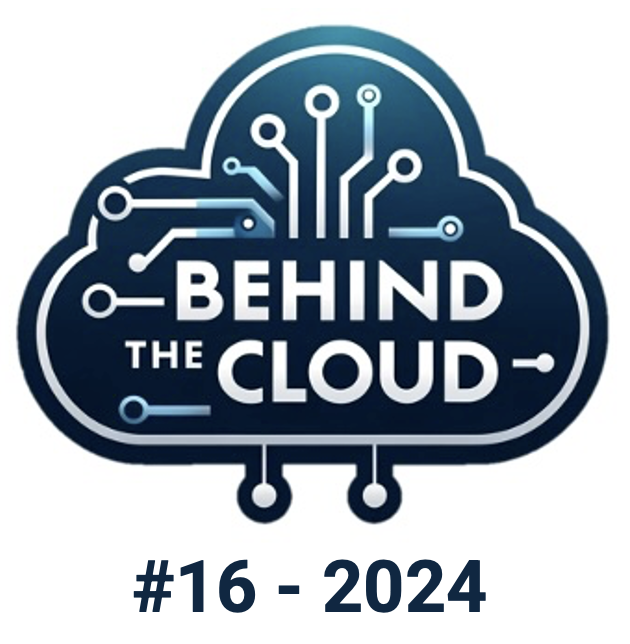
Making the Right Choice: On-Premises vs. Cloud vs. Hybrid Solutions

#16 - Behind The Cloud: High-Performance Computing and Infrastructure (4/7)
On-Premises vs. Cloud Infrastructure vs. Hybrid Solutions: Making the Right Choice for Asset Management
September 2024
As asset management firms increasingly adopt Artificial Intelligence (AI) to gain a competitive edge, the decision of where to host AI workloads becomes critical. The choice between on-premises, cloud, and hybrid infrastructure has far-reaching implications for performance, cost, security, and scalability. In this chapter, we will explore the pros and cons of each option, key factors to consider when making this decision, and real-world examples of how financial institutions have successfully implemented these infrastructure strategies.
Understanding the Options: On-Premises, Cloud, and Hybrid Solutions
When it comes to hosting AI workloads, firms have three primary options: on-premises infrastructure, cloud-based solutions, and hybrid approaches that combine elements of both. Each option has its own set of advantages and challenges, and the best choice depends on the specific needs and goals of the organization.
- On-Premises Infrastructure: On-premises infrastructure refers to computing resources that are hosted and managed within the organization’s own data centers. This traditional approach gives firms complete control over their hardware, software, and data, making it an attractive option for organizations with stringent security and compliance requirements. An alternative in this respect could be also a colocation in specialized data centers, where firms are owning and managing machines in a bigger external park.
- Cloud Infrastructure: Cloud infrastructure, on the other hand, involves using computing resources provided by third-party cloud service providers such as Amazon Web Services (AWS), Google Cloud, Microsoft Azure, Hetzner or Aruba. Cloud solutions offer scalability, flexibility, and cost efficiency, as firms can easily adjust their resources based on demand and pay only for what they use.
- Hybrid Solutions: Hybrid solutions combine on-premises and cloud infrastructure, allowing firms to leverage the strengths of both approaches. In a hybrid setup, sensitive data and critical workloads might be kept on-premises for security reasons, while less sensitive tasks are moved to the cloud to take advantage of its scalability and flexibility.
Pros and Cons of On-Premises Infrastructure
Pros
- Costs: Even if set up costs look high (see. Cons), they are usually lower than in the cloud, especially when it comes to GPU hardware.
- Control and Customization: On-premises infrastructure gives firms full control over their computing environment. This level of control allows for extensive customization of hardware and software to meet specific requirements. It also enables firms to fine-tune performance and optimize their infrastructure for their unique AI workloads.
- Data Security and Compliance: For organizations dealing with highly sensitive data, on-premises infrastructure offers a higher level of security. Data is stored and processed within the organization’s own facilities, reducing the risk of unauthorized access. This setup also simplifies compliance with industry regulations, as firms have direct oversight of their data and can implement tailored security measures.
- Latency and Performance: On-premises infrastructure can provide lower latency and higher performance for certain AI applications, such as high-frequency trading, where every millisecond counts. By keeping data and computing resources close to each other, firms can minimize the time it takes for data to be processed and decisions to be made.
Cons
- High Upfront Costs: Setting up and maintaining on-premises infrastructure requires a significant upfront investment in hardware, software, and facilities. Additionally, firms must allocate resources for ongoing maintenance, upgrades, and staffing to manage the infrastructure.
- Limited Scalability: Scaling on-premises infrastructure to meet growing AI demands can be challenging and costly. Adding more servers, storage, and networking capacity requires physical space, power, and cooling, which may be limited.
- Resource Management: Managing on-premises infrastructure involves a higher level of complexity, requiring specialized IT staff to handle tasks such as system administration, security, and troubleshooting. This can strain resources, especially for smaller firms.
Pros and Cons of Cloud Infrastructure
Pros
- High Availability and Security: One of the most significant advantages of a cloud infrastructure is its robust high availability and security features. Cloud providers ensure that AI workloads remain operational with minimal downtime, thanks to advanced virtualization, redundant systems, and failover mechanisms. Additionally, cloud platforms offer enhanced physical and network security, with multiple layers of protection and compliance with industry standards. This ensures that data and applications are secure and resilient, with minimal impact from potential hardware failures.
- Scalability and Flexibility: Cloud infrastructure excels in its ability to scale resources up or down based on demand. This elasticity is particularly beneficial for AI workloads, which can vary greatly in terms of computational requirements. Firms can quickly add more computing power, storage, or networking capacity as needed, without the need for significant capital investment.
- Cost Control: While cloud computing may not always be the most cost-efficient option, it offers superior cost control. The pay-as-you-go pricing model helps firms avoid the upfront capital expenditures associated with on-premises infrastructure. This model allows for more accurate budgeting and cost management, particularly when scaling resources to match demand. Additionally, cloud providers offer options like reserved instances and spot pricing, which can help manage costs effectively for long-term or flexible workloads.
- Access to Advanced Tools and Services: Cloud platforms provide a wide range of AI tools and services that are constantly updated and improved. These include managed machine learning services, pre-built AI models, and advanced analytics tools. By leveraging these services, firms can accelerate their AI initiatives and stay at the forefront of technological innovation.
Cons
- Data Security and Compliance: Storing and processing data in the cloud introduces security and compliance challenges, particularly for firms handling sensitive financial data. Although cloud providers implement robust security measures, organizations must ensure that these measures align with their regulatory requirements and internal policies.
- Vendor Lock-In: Relying heavily on a single cloud provider can create dependencies that make it difficult to switch providers or integrate with other platforms. To mitigate this risk, firms should consider adopting a multi-cloud strategy or using open standards that facilitate interoperability.
- Latency Concerns: For certain AI applications that require real-time processing, latency can be a concern in a cloud environment. The physical distance between cloud data centers and end-users can introduce delays, impacting the performance of latency-sensitive tasks.
- Cost Considerations: The cost of a cloud infrastructur, particularly for GPU-intensive workloads, can be prohibitively high. While cloud platforms offer flexibility and scalability, the expenses associated with high-performance computing resources like GPUs can quickly escalate. Firms must carefully evaluate the cost implications of running AI workloads in the cloud and consider alternative strategies, such as hybrid cloud or on-premises solutions, to manage costs effectively.
Pros and Cons of Hybrid Solutions
Pros
- Best of Both Worlds: Hybrid solutions offer a flexible approach by combining the control and security of on-premises infrastructure with the scalability and cost-efficiency of the cloud. This allows firms to optimize their infrastructure based on the specific needs of different workloads.
- Improved Resilience: By distributing workloads across on-premises and cloud environments, hybrid solutions can enhance resilience and ensure business continuity. For example, critical workloads can be kept on-premises, while less critical tasks are moved to the cloud, providing a backup in case of an on-premises failure.
- Data Localization: Hybrid solutions enable firms to keep sensitive data on-premises for security and compliance reasons, while taking advantage of the cloud for processing and analyzing less sensitive data. This approach ensures that firms can meet regulatory requirements without sacrificing the benefits of cloud computing.
Cons
- Complexity: Managing a hybrid infrastructure requires careful planning and coordination, as it involves integrating and synchronizing on-premises and cloud resources. This complexity can increase the burden on IT staff and require additional tools and processes to manage effectively.
- Cost Management: While hybrid solutions can optimize costs by leveraging the cloud for scalable workloads, they can also introduce hidden costs, such as data transfer fees between on-premises and cloud environments. Firms must carefully monitor and manage these costs to avoid unexpected expenses.
- Security and Compliance Challenges: Ensuring consistent security and compliance across both on-premises and cloud environments can be challenging. Firms must implement robust security measures and policies that apply to both environments, and ensure that data is protected as it moves between them.
Key Factors to Consider When Choosing an Infrastructure Strategy
When deciding between on-premises, cloud, and hybrid solutions, asset management firms should consider several key factors:
- Workload Requirements: Assess the specific needs of your AI workloads, including performance, scalability, and latency requirements. High-frequency trading, for example, may benefit from on-premises infrastructure due to its low latency, while large-scale data analysis might be better suited for the cloud.
- Data Sensitivity and Compliance: Consider the sensitivity of your data and the regulatory requirements governing its storage and processing. For highly sensitive data, on-premises or hybrid solutions may offer better control and compliance.
- Cost Considerations: Evaluate the total cost of ownership for each option, including upfront investments, operational expenses, and potential hidden costs. Cloud solutions may offer lower initial costs, but on-premises infrastructure can be more cost-effective in the long run for stable workloads.
- Scalability Needs: Consider how your AI workloads are expected to grow over time. If scalability is a priority, cloud or hybrid solutions may offer the flexibility needed to meet increasing demand without significant capital investment.
- IT Resources and Expertise: Assess the availability of IT staff and expertise within your organization. On-premises infrastructure requires more hands-on management, while cloud solutions can offload much of the operational burden to the cloud provider.
Real-World Examples of Infrastructure Strategies
- JP Morgan Chase: JP Morgan Chase has adopted a hybrid cloud strategy, leveraging both on-premises infrastructure and cloud services to support its AI and machine learning initiatives. By using a combination of private data centers and public cloud platforms, the firm is able to maintain control over sensitive data while taking advantage of the cloud’s scalability for analytics and AI workloads.
- Goldman Sachs: Goldman Sachs has embraced cloud computing as a core component of its AI strategy, partnering with cloud providers like AWS to build a scalable and flexible infrastructure. The firm uses cloud services to run large-scale simulations, analyze market data, and deploy AI models in real-time, allowing it to respond quickly to market changes.
- Bank of America: Bank of America has invested heavily in on-premises infrastructure to support its AI and machine learning efforts, focusing on control, security, and low latency. The firm’s private data centers host critical AI workloads, including fraud detection and risk management, ensuring that sensitive data remains within the organization’s control.
- Omphalos Fund: As a newcomer and greenfield operation, Omphalos Fund is using a hybrid cloud solution. Thanks to a carefully designed hybrid architecture, infrastructure costs are 60% below “normal” settings with the same performance..
Conclusion
The choice between on-premises, cloud, and hybrid infrastructure is a strategic decision that can have a significant impact on the success of AI initiatives in asset management. By carefully considering the pros and cons of each option, as well as the specific needs of their workloads, firms can make informed decisions that align with their goals and resources.
Thank you for following our third series on “Behind The Cloud”. Stay tuned to “Behind The Cloud” as we continue to unpack the critical components of AI infrastructure in asset management in the coming weeks.
If you missed our former editions of “Behind The Cloud”, please check out our BLOG.
© The Omphalos AI Research Team – September 2024
If you would like to use our content please contact press@omphalosfund.com



